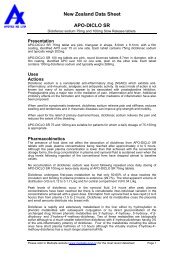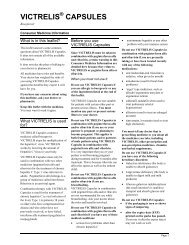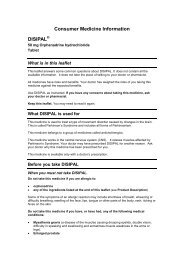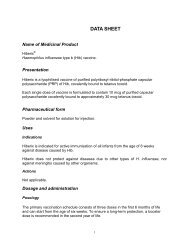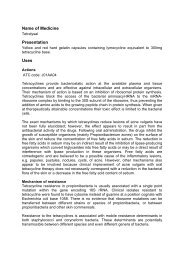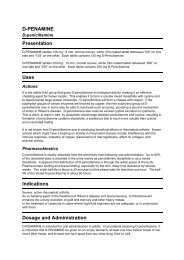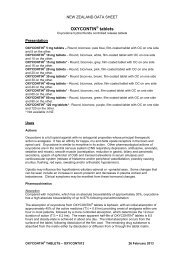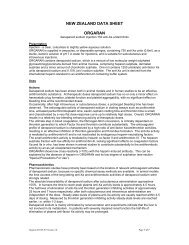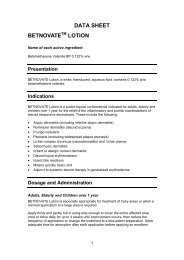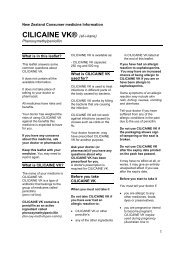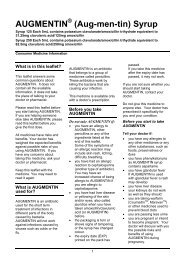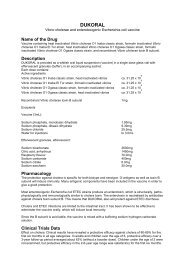New Zealand Datasheet Name of Medicine NovoRapid - Medsafe
New Zealand Datasheet Name of Medicine NovoRapid - Medsafe
New Zealand Datasheet Name of Medicine NovoRapid - Medsafe
You also want an ePaper? Increase the reach of your titles
YUMPU automatically turns print PDFs into web optimized ePapers that Google loves.
As with all insulins in clinical practice, the duration <strong>of</strong> action <strong>of</strong> insulin aspart will vary<br />
according to the dose, injection site, blood flow, temperature and level <strong>of</strong> physical activity.<br />
Insulin aspart is equipotent to soluble human insulin on a molar basis.<br />
<strong>NovoRapid</strong> produces a more rapid and pronounced blood glucose lowering effect than<br />
soluble human insulin, due to the faster onset <strong>of</strong> action.<br />
<strong>NovoRapid</strong> has a shorter duration <strong>of</strong> action compared to soluble human insulin after<br />
subcutaneous injection (Fig.1).<br />
When administered immediately before a meal, the effect <strong>of</strong> <strong>NovoRapid</strong> more closely mimics<br />
normal physiological postprandial insulin release than soluble human insulin.<br />
The onset <strong>of</strong> action <strong>of</strong> <strong>NovoRapid</strong> occurs within 10-20 minutes <strong>of</strong> subcutaneous injection.<br />
The maximum effect is exerted between 1 and 3 hours after injection. The duration <strong>of</strong> action<br />
is 3 to 5 hours. <strong>NovoRapid</strong> has a more predictable time to peak effect within subjects than<br />
soluble human insulin.<br />
Fig. 1: Blood glucose concentrations* (mean +/- 2SEM) following a single pre-meal dose<br />
(0.15 U/kg) <strong>of</strong> <strong>NovoRapid</strong> injected immediately before a meal (solid curve) or soluble human<br />
insulin administered 30 minutes before a meal (dashed curve) in patients with type 1<br />
diabetes mellitus.<br />
Blood<br />
glucose<br />
(mmol/L)<br />
16<br />
14<br />
12<br />
10<br />
8<br />
6<br />
4<br />
2<br />
0<br />
0 1 2 3 4 5<br />
Time (h)<br />
Pharmacokinetics<br />
Human insulin molecules self-associate to form hexamers. The substitution <strong>of</strong> proline by<br />
aspartic acid at position B28 in insulin aspart produces an intermolecular repulsion which<br />
reduces the tendency <strong>of</strong> the insulin molecules to self-associate. This increases the rate <strong>of</strong><br />
dissociation <strong>of</strong> hexamers into dimers and monomers in the subcutaneous layer.<br />
<strong>NovoRapid</strong> is more rapidly absorbed from the subcutaneous layer than soluble human<br />
insulin.<br />
The tmax is on average half <strong>of</strong> that for soluble human insulin. In different studies, the tmax was<br />
reached after 40-50 minutes with <strong>NovoRapid</strong> compared to 80-120 minutes for soluble human<br />
2



